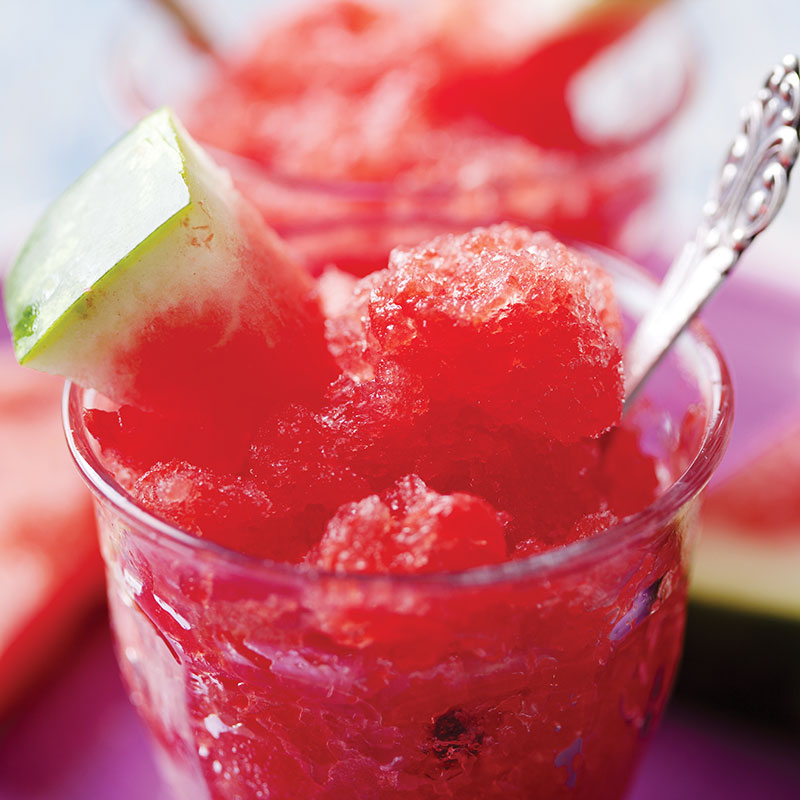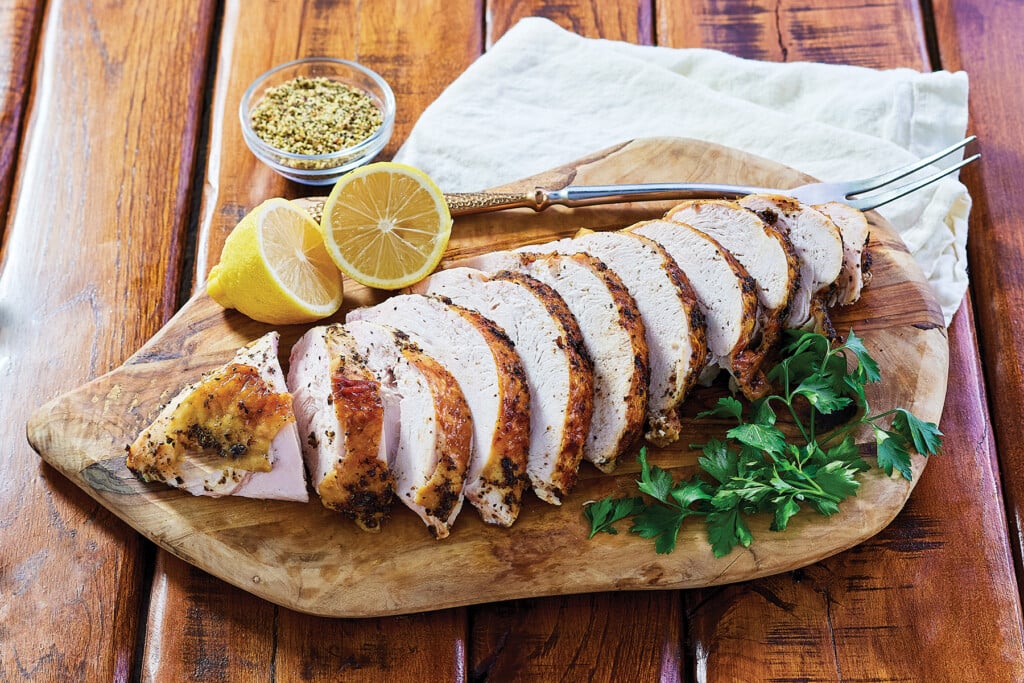Sink Your Teeth Into America’s Favorite Summertime Snack
Seeded, Seedless or On the Rocks: Juicy New Ways to Enjoy an American Classic


Chelsea Moore |
On average, Americans eat 15 pounds of watermelon every year. Since a typical watermelon yields 14 pounds of edible fruit, that’s over one entire watermelon’s worth of squishy sweetness per person per annum — and if the popularity of Independence Day watermelon-eating contests is any indication, most of that might be consumed in July.
Why does watermelon appeal to so many people? Its naturally chilly, sweet taste makes it a great cooling-down alternative to sugary soda. Plus, let’s be honest: Spitting the seeds is just plain old fun.
As completely as the United States has absorbed it into its culture, watermelon is far from a uniquely American fruit. It is thought to have originated in the Kalahari Desert in the southern part of Africa.
The earliest recorded watermelon crop was harvested in Egypt in approximately 3,000 B.C., according to hieroglyphic records on the walls of ancient structures. Egyptians sometimes buried their pharaohs with a watermelon to nourish them in the afterlife.
While most Americans associate watermelon with Independence Day, people in Iran, Afghanistan and other countries in Central Asia make a point to eat it on Yalda, a festival marking the longest night of the year that goes back to the Persian empire. According to tradition, if you eat watermelon on Yalda, you will never be thirsty during the coming summer — an important consideration for people in one of the driest areas of the world.
Today, the United States ranks fifth in global watermelon production, with Florida as the most watermelon-productive state.
Stephanie Barlow of the National Watermelon Promotion Board credits Florida’s high melon output to its abundant sunshine.
 “Water is not an issue for us as it is in other parts of the country,” said Barlow, whose office is based in Winter Springs, Florida, “and we also get two harvests, because of the warm weather.”
“Water is not an issue for us as it is in other parts of the country,” said Barlow, whose office is based in Winter Springs, Florida, “and we also get two harvests, because of the warm weather.”
While most watermelon-growing states can harvest only in May or June, our famous Florida heat allows us to harvest not only in the typical peak season but also from October through December.
Experimentation with watermelon flavor is nothing new: The first cookbook published in the United States included a recipe for watermelon-rind pickles, and that was in 1776. However, as time has gone on, culinary technique has gotten more and more creative.
Local chef John Jacob, of Vinti’j Wine Boutique in Miramar Beach, suggests some unexpected ways to enjoy this summer fruit.
“I find that watermelon paired with a spice such as chipotle, cayenne or rooster sauce makes for a nice contrast of heat to sweet,” he said.
Jacob adds that watermelon can be paired with most meats to add sweetness to savory dishes.
“Perhaps not beef,” he admits, “but a pork tenderloin or quail with properly spiced melon would be great.”
Watermelon can also make for a refreshing summer party drink. One local option is Panama City Beach Winery’s watermelon wine, a summery, invigorating take on citrus wine. Great for picnics and barbecues, you can pick up a bottle from the winery or order one online at pcbwinery.com.
Brent Sutton, general manager of The Craft Bar in Destin, concocts a refreshing watermelon cocktail and offers some suggestions for mixologists who want to get creative at home.
“Fresh watermelon goes well with clear liquors — vodka, gin,” he explained. “We mix it with herbs like mint and basil. Gin’s a little more aromatic, so you’ll get a little less of the watermelon. The goal with vodka, of course, is purity, so if you want more of the watermelon flavor, you’ll want to mix it with vodka.”
Sutton adds that there are some delicious watermelon-flavored liquors on the market as well. Three Olives Watermelon Vodka and new Bacardi Grand Melon Rum are his top recommendations.
Of course, the most nutrient-rich way to enjoy your watermelon is raw. Every chunk of fresh watermelon is filled with vitamins A, B6 and C, as well as the cancer-preventing antioxidant lycopene. In addition, this versatile fruit can help with hydration, as it clocks in at 92 percent water on average.


